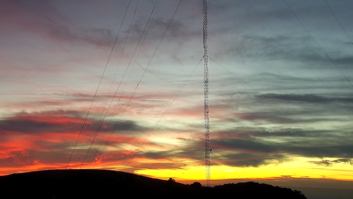Method of Moment Proofs
Mar 1, 2011 1:00 AM, By Jeremy Ruck, PE
I must admit that several years ago when the method-of-moments proof concept began to be seriously considered by the FCC, both Don Markley and I had some reservations about its use. The objections were not based on any problem with the theory, but rather concerns about how to independently verify the performance of an array licensed by this method. Were adjacent stations really being protected or would such proofs ultimately become a dry-lab exercise?
The requirement of the reference field strength measurements described in the rules, combined with our firm actually performing some of the proofs, have allayed my original fears. This valuable tool has become yet another available to the broadcast engineer. Like any tool, though, there are certain applications where another tool is more appropriate. Think of the traditional proof as a set of slip-joint pliers and the moment method proof as a ratcheting combination wrench. The pliers will usually loosen any nut, however, the wrench is a more specific and elegant solution. With increased specificity, however, comes the potential for exclusion in certain circumstances.

Except for some verification measurements, a MoM proof eliminates the ongoing monitor point checks.
At the heart of the moment method proof is a computer model using an appropriate software package. There are several different ports of the code. The ports of the code vary in their user interface and usable platform. In some cases, there are PC executables, while in others the FORTRAN source code must be adapted and compiled. Regardless of the particular flavor, the goal of the computer modeling is to mathematically define the array adjustment error, and eliminate the human opinion or subjectivity component.
The moment method proof, however, is not applicable in all cases or array designs. For instance, arrays utilizing top-loading, sectionalized elements, or folded unipoles (i.e. skirted towers) must go the traditional route. In addition, shunt-fed elements also preclude the use of the method of moments. Therefore, the use of this process is more or less limited to the run of the mill “traditional” designs.
It would be logical to assume the towers in any given array are actually at the locations relative to the reference point as specified in the authorization. Often, however, the distances and orientations may not completely agree. Variances typically result from survey error, clerical error, or insufficient accuracy in techniques, and in the cases other than clerical are typically limited to older construction. Since the MoM proof is based on modeling rather than a plethora of ostensibly verifiable and repeatable field strength measurements, it is necessary to use the actual spacing and azimuths between the constituent elements in the model. As a result, a stamped survey by a registered land surveyor in your jurisdiction will be required. This survey must be an as-built version, and not the one utilized to lay out the locations during construction.
Once the as-built locations are known, a suitable model of the array can be constructed. In constructing the model, a simpler set of parameters that meets the minimum FCC requirements and does not violate internal program constraints is ideal. Early on in working with the software, one mistake that is commonly made is to make the model much more complex than it should or needs to be. An overly complex model, when it comes time to vary the parameters to match the measured impedance values, will become unwieldy, require excessive time for convergence, and ultimately not yield more accurate results. A kiss is always a good thing.
— continued on page 2
Method of Moment Proofs
Mar 1, 2011 1:00 AM, By Jeremy Ruck, PE
Invariably, the resulting impedance values determined from the software will not fully agree with the matrix determined from accurate measurements. At this point, tweaks in the physical model can be made to make the model converge to the empirically determined impedances. Tweaks, however, may not be employed to force the array element outside of the constraints of 47 CFR 73.151(c). In no cases may the location and azimuths be modified from the surveyed values, so changes are limited to the variables that make up the tower including lumped inductance and base region shunt capacitance, and size changes near the base. The rules require that the impedance measurements be made with all other towers either open-circuited or shorted. Taking both sets, however, is a good technique check as well as an alternate variable in case model convergence becomes overly problematic.
Once this state of convergence is reached, the set of desired antenna monitor parameters results. The parameters may be measured with either sample loops or current transformers. Use of loops, however, is limited to arrays where the towers are identical in cross-sectional structure. The identity of cross-sectional structure includes both leg and cross member characteristics, and not just face size. Loops may be used with unequal height towers; however, the loops will need to be mounted at identical locations on each tower. In other cases, current transformers will need to be utilized.
The required location of current transformers continues to be at the output of ATU, while the loop location becomes defined. Under the traditional method loops, because they are voltage-sensing devices, tended to be placed around voltage maxima on a tower. Under MoM, they must be located at the minimum current point if the tower were detuned. For unequal height towers, the location needs to be at the same location with respect to cross members at the appropriate elevation above the base insulator.
An acceptable sample system under MoM requires two sets of verification measurements. One is used to demonstrate rule compliance, while the other aids in baseline construction for subsequent system verification. As stated in the Rules, sample lines must be equal in length to within one electrical degree at carrier and impedance within 2 ohms. By the traditional method, we could simply state that the lines were equal length, and while they were probably close, there was not the degree of precision that MoM requires. Here, the arcane procedure listed in the rules must be explicitly followed and indeed demonstrated to the Commission when the supporting documentation is filed.
Each of the sample lines is measured with it open circuited at the transformer or loop end of the run. In this configuration, the series resonant frequency closest to the carrier frequency is sought. At the frequency where series resonance is achieved, the measured resistance will be close to zero, as will the reactance. This location will wind up being an odd multiple of 90 degrees at the determined frequency. The impedance is then measured based on frequencies that correspond to +/-45 degrees in length.
Once adjustment is made according to the derived parameters, and the sample system is found to be within acceptable limits, a series of reference field measurements are made. These measurements function like monitor points, and are invaluable for subsequent diagnoses. At least three must be performed on each azimuth corresponding to pattern maxima and minima. Although a photograph requirement is not expressly listed in the rules, GPS coordinates and a physical description must be included. The exclusion of a photograph at each point considering the cost and availability of digital cameras really seems somewhat silly, so spending the extra time to include an image may help resolve subsequent disputes. These field measurements, which also include recertification of the sample system, must be performed and placed in the public file at least every two years.
The moment method proof has the capacity to reduce the proof expense required with arrays. This is especially true in cases where the patterns are difficult, or in geographic areas where the acquisition of field measurements is extremely difficult, or impossible. For existing constructions, relicensing may require significant sample system modifications, so there may not be any huge economic benefit. Finally, for the simplest of all arrays, the 90-degree-in-height, 90-degree-spaced two-tower, the cost associated with both methods is probably a wash.
The bottom line is that the MoM proof, when properly applied, is a superb tool. The level of accuracy is quite good, and verification field measurements eliminate the dry-lab concerns. Perhaps one of the best features is the removal of subjective analysis. After all, the traditional analysis is based on the veracity of the non-directional inverse field, which can be highly subject to interpretation. That is, however, a topic for another day.
Ruck is a senior engineer with D.L. Markley and Associates, Peoria, IL.






